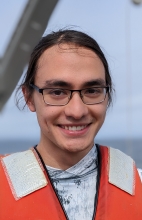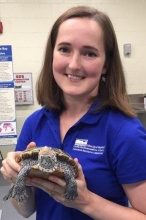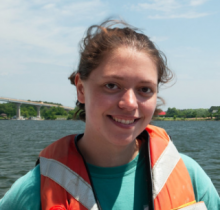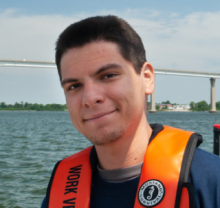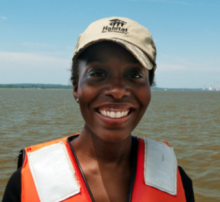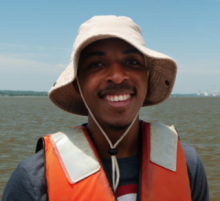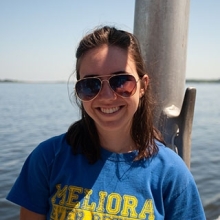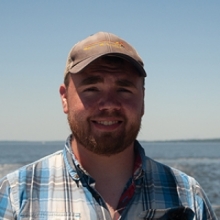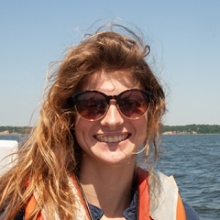Eight students will be presenting the summer work at the Ocean Sciences Meeting in March 2022!
Amy Long, University of Pittsburgh
Class Year:
2001Mentor:
Diane Stoecker Ph.D. Larry Sanford, Ph.D.Project Title:
What Levels of Turbulence Affect Pfiesteria piscicida's Ability to Graze
Abstract:
The dinoflagellate, Pfiesteria piscicida, was exposed to varying levels of shear comparable to those found in its natural environment. The shear rates tested, produced by Couette devices, were 0, 1, 3, and 10 s-1. P. piscicida and its in-culture prey, Storeatula major, were put in Couette devices at known concentrations and, at 24 hour intervals over 4 days, samples were withdrawn to measure the effect of shear on P. piscicida's growth and ability to graze on S. major. Additional experiments were conducted to determine how shear affected S. major, and how shear would affect a starved culture of P. piscicida. It was found that below 1 s-1, shear was not significant on Pfiesteria growth. However, at 3 and 10 s-1, shear significantly affected Pfiesteria growth. In the supplemental experiment testing the feeding rates of Pfiesteria after an hour of exposure to shear, the proportion of Pfiesteria with orange fluorescent inclusions (feeding cells) was dependent on the level of shear the specific treatment received.
Publications:
Stoecker, D. K., A. Long*, S. E. Suttles, and L. P. Sanford. 2006. Effect of small-scale shear on grazing and growth of the dinoflagellate Pfiesteria piscicida . Harmful Algae 5:407-418 .
Presentations:
Long, A.*, D. Stoecker, and L. Sanford. 2002. The effects of small-scale shear on Pfiesteria piscicida. ASLO Ocean Sciences Meeting, Honolulu, Hawaii .



